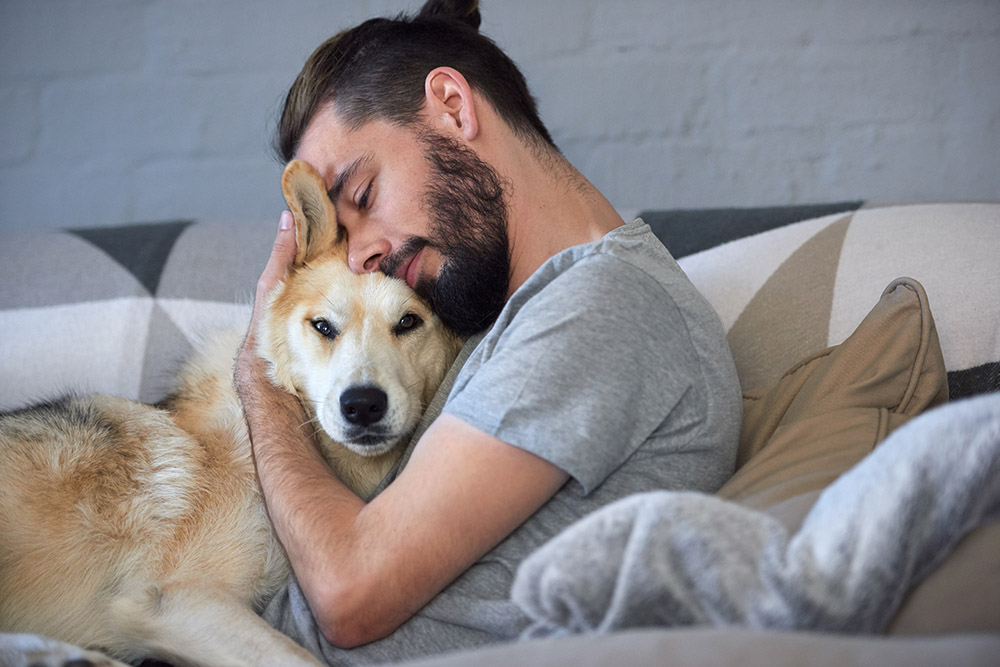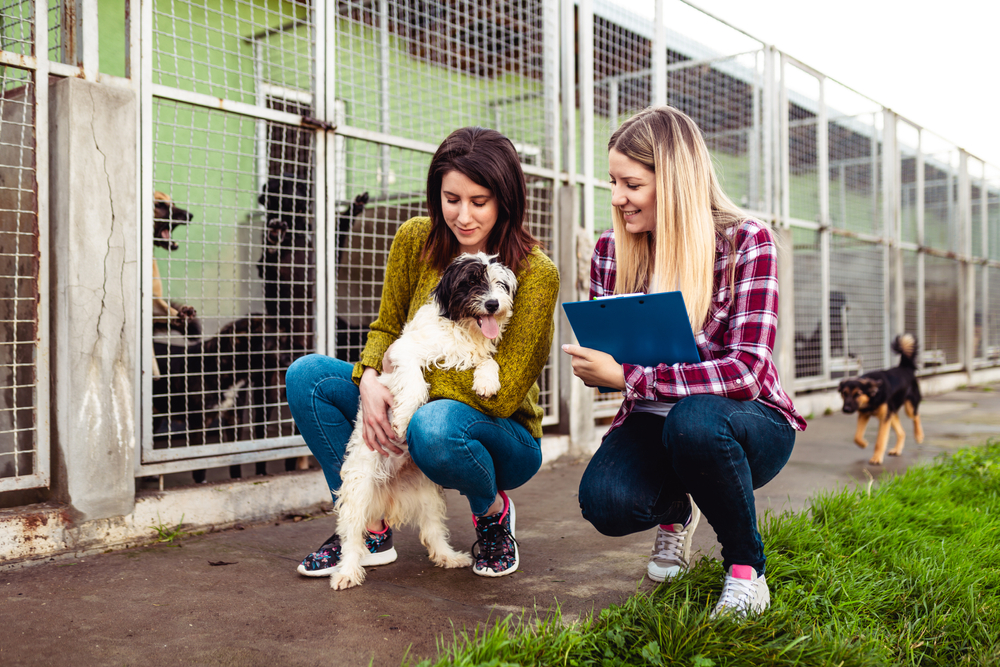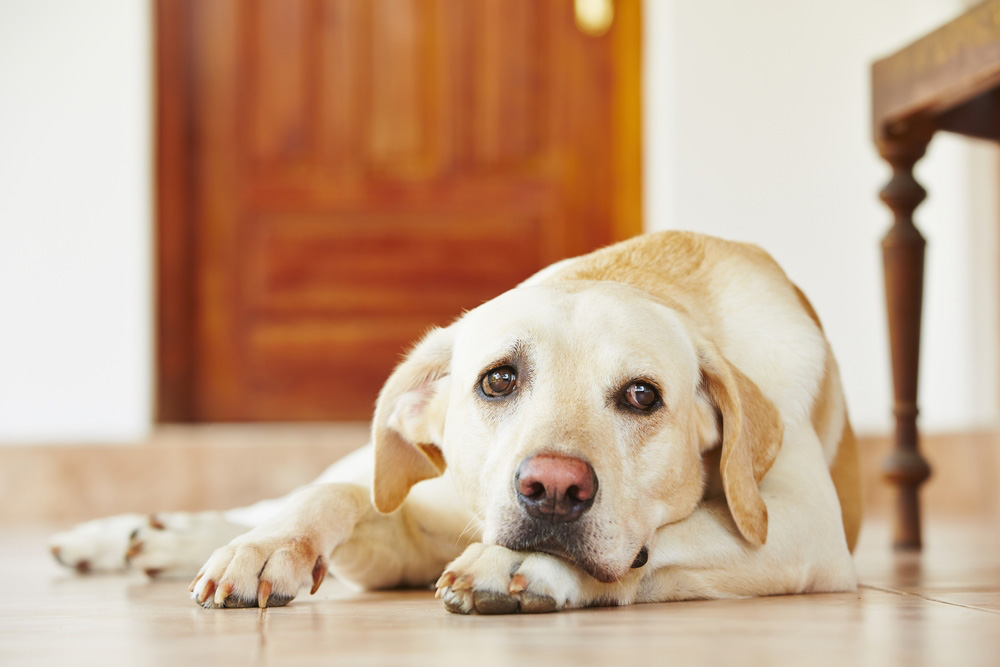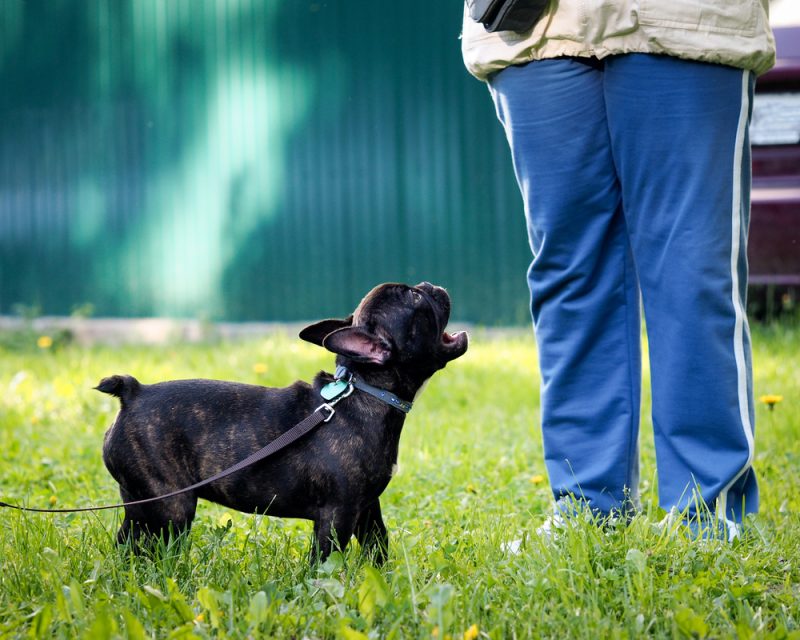In this article
View 2 More +A seizure is a scary thing for a dog owner to witness. It involves uncontrolled movement on your dog’s part, followed by a post-ictal period where a pup may appear disoriented and uncoordinated, and they may not even recognize you. What may be even scarier than seeing a seizure is knowing that your dog could have one while you’re not home to monitor it and protect them. If your dog is prone to seizures, we prepared tips to help you and your dog rest easier.

What to Do When Your Dog Has a Seizure and You’re Not Home
Seizures are something that your vet should know about. So, whether your dog has had one seizure or many, be sure to have them checked out by a veterinarian first. They will then decide if seizure medication is necessary, or they may have you take note of the duration and frequency of seizures if they are few and far between.
Now, here’s what to do if your dog is prone to seizures and you can’t always be home to monitor them.
1. Keep Them Safe
The biggest concern with seizures is a dog’s safety while they are convulsing. They may fall off of furniture or bump into things, causing stuff to fall on them. Ideally, you want them to be in an open, clear space, away from stairs, off of furniture, and out of reach of tall objects. This may mean putting your pet in a crate or small room whenever you leave. If this isn’t a possibility, consider getting a dog pen or gating off stairs or rooms with lots of furniture so your dog doesn’t have access to them. If they’re at risk of having seizures, don’t let your pet have free run of the house or yard while you’re gone.
2. Monitor Them From a Distance

If your dog regularly has seizures, you may want to consider setting up a doggie security camera so you can keep an eye on them. Many cameras can connect to smartphones, so you can have an around-the-clock visual of your pet. Place the camera and your dog in the same small room, and feel free to check in on them throughout the day to monitor for seizure activity.
3. Enlist Help
If you’re away for long periods during the day and your dog is a seizure risk, it may be worth getting a friend or neighbor to check in on them. You may even want to hire a dog walker or sitter who can check on them once or twice throughout the day to make sure they are safe. Ensure that these people are trained in how to keep your dog safe while they are seizing.
4. Provide Comfort

Coming out of a seizure can leave a dog feeling out of it and potentially uncomfortable. Making sure they have a safe space to relax and get their bearings may help relieve a bit of the anxiety, especially if you can’t be there in person. Know that all they often need is time and reassurance to feel better. If your dog isn’t back to normal within a couple of hours, though, contact your vet.
5. Try Wearable Technology
You may want to look into seizure-detection devices for your dog. These keep track of your dog’s vital signs and can alert you when they are having a seizure. Ask your vet for more details, as this is fairly new technology.
6. Consider Doggie Daycare

If you can’t stand the thought of your dog experiencing a seizure alone, doggie daycare may be the answer. Just be sure the daycare personnel know about your dog’s seizures and how to handle them should they occur.

Can You Leave a Dog That Has Seizures Alone?
In a perfect world, we would spend every minute with our canine companions, especially those that experience seizures. Of course, that isn’t always practical, making it a necessity to leave a dog that has seizures alone at least part of the time. To help combat this, rather than giving your dog free range of the house, confine them to a crate or small, open room while you’re away. This will prevent them from injuring themselves on stairs, furniture, or other objects while they are seizing.
You’ll also ideally want to have a check-in system so you can get them to a vet if they have an overly long seizure. This may mean getting a security camera, requesting neighborly check-ins, doing doggie daycare, or hiring a sitter to watch over them throughout the day. Anyone watching your dog should know how to respond to their seizures in order to keep your pet and themselves safe.
Seek veterinary advice if you’re concerned about your pet’s well-being.
If you need to speak with a vet but can't get to one, head over to PangoVet. It's our online service where you can talk to a vet online and get the advice you need for your dog — all at an affordable price!
Should You Touch a Dog Having a Seizure?
The answer to this depends on what phase of seizure your dog is experiencing, but generally speaking, you shouldn’t touch your dog until afterward.
- Aural phase: This initial phase is where you may notice a change in behavior, such as restlessness or anxiety. Most of the time, though, you won’t see or notice this phase, so if you do, it’s best to prepare yourself and put your dog in a safe space. You may also want to call your vet just to keep them in the loop.
- Ictal phase: This is when your dog will be having convulsions. They may paddle their legs, twitch their muscles, nip at the air, or foam from the mouth. This phase may last a few seconds or several minutes. During this time, don’t touch your dog! They are unaware of what is happening and may bite you accidentally. Instead, make sure they are in an open area where they won’t bump into things or fall down stairs or off furniture.
- Post-ictal phase: This is the recovery phase, when your dog starts to “wake up” and may seem disoriented and uncoordinated. They may have temporary blindness or deafness. This period can last a few minutes or a few hours. Give them peace and quiet in a safe area, reassuring them until they get their bearings.


Conclusion
Seeing your dog go through a seizure can be terrifying and leave you with a feeling of helplessness, but what may be even worse is thinking about them going through one while you’re not there. You can help prepare for your pet’s seizures by making sure your dog is left in a safe space, such as a crate, while you’re not home. You may also want to get regular check-ins with a security camera, neighbor, dog walker, or a seizure-detection device throughout the day to boost your peace of mind.
- See also: Common Seizure Medication For Dogs
Featured Image Credit: aromir Chalabala, Shutterstock


















